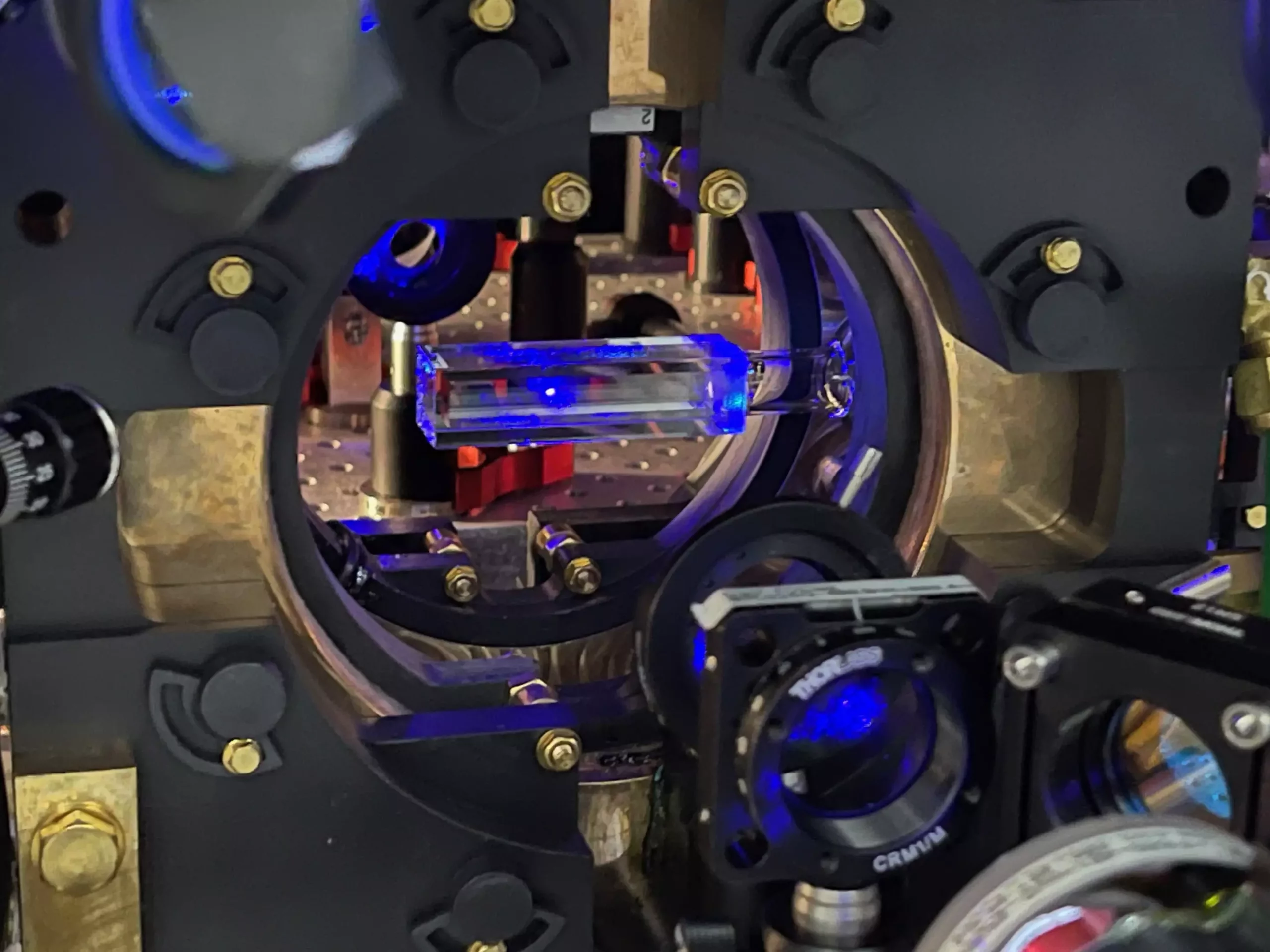In the realm of quantum physics, high-precision sensing techniques are essential for probing the microscopic properties of materials. One of the recent breakthroughs in this field is the emergence of analog quantum processors, with quantum-gas microscopes standing out as powerful tools for investigating quantum systems at the atomic level. These devices have the capability to produce images of quantum gases with unparalleled resolution, allowing for the detection of individual atoms.
Researchers at ICFO in Barcelona, Spain, led by ICREA Professor Leticia Tarruell, have developed their own quantum-gas microscope named QUIONE, inspired by the Greek goddess of snow. Unlike any other in the world, QUIONE is capable of imaging individual atoms of strontium quantum gases, making it the first of its kind in Spain. Their groundbreaking work has been published in the journal PRX Quantum, highlighting the significance of this achievement.
Beyond the impressive imaging capabilities of QUIONE, the primary goal of this quantum-gas microscope is quantum simulation. By simplifying complex systems into more manageable models, quantum simulation addresses questions that are beyond the reach of current classical computers. Professor Tarruell emphasizes that this approach is crucial for understanding phenomena such as the conductivity of materials at high temperatures.
The Unique Experiment of QUIONE
What sets QUIONE apart is the team’s ability to bring strontium gas into the quantum regime, confine it within an optical lattice for interaction, and employ single atom imaging techniques. This trifecta of elements distinguishes ICFO’s quantum-gas microscope from its predecessors, which predominantly used alkaline atoms like lithium and potassium. The distinct properties of strontium offer a wealth of possibilities for quantum computing and quantum simulation applications.
The Development Process of QUIONE
To achieve quantum coherence in their experiment, the researchers at ICFO meticulously cooled the strontium gas using laser beams, bringing it to near absolute zero temperatures in a matter of milliseconds. Subsequently, they harnessed the principles of quantum mechanics to induce quantum superposition and entanglement among the atoms. The activation of the optical lattice laid the groundwork for studying the quantum dynamics of the atom ensemble.
Observations and Insights from QUIONE
Through the lens of their quantum-gas microscope, the researchers captured the intricate behavior of strontium quantum gas at a granular level. In addition to still images, they recorded videos that revealed the phenomenon of quantum tunneling, wherein atoms exhibited non-local movement within the lattice structure. This observation provided a direct illustration of the inherent quantum nature of the atoms.
In a pivotal moment of their experiment, the research group confirmed the presence of superfluidity in the strontium gas by allowing the atoms to expand in space and interfere with each other. The resulting interference pattern validated the superfluid state of the sample, demonstrating its flow without viscosity. This discovery opens up new avenues for exploring exotic phases of matter through quantum simulation.
Conclusion: Towards a Quantum Future
As Professor Tarruell aptly summarizes, the integration of strontium into the realm of quantum-gas microscopy heralds a new era of possibilities. With the potential to simulate more complex materials and uncover novel phases of matter, QUIONE represents a pioneering advancement in quantum research. By leveraging the power of high-resolution imaging and quantum manipulation, the ICFO team has unlocked a realm of quantum phenomena that holds promise for transformative scientific breakthroughs.


Leave a Reply